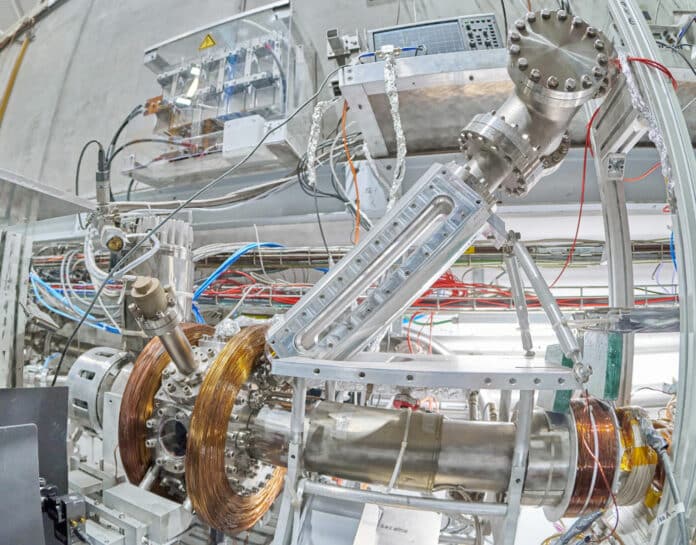AEgIS is conducting experiments at CERN’s Antimatter Factory to study antihydrogen atoms. The ultimate goal is to test whether antimatter and matter fall to Earth in the same way.
According to a new paper published in Physical Review Letters, the collaboration has achieved a significant experimental feat that will not only help them achieve their goal but also pave the way for a new set of antimatter studies. This includes the possibility of producing a gamma-ray laser that would allow researchers to look inside the atomic nucleus and have applications beyond physics.
We and everything around us are made up of matter. When the Universe was born, antimatter was also created in equal amounts. However, it’s found in very small amounts in the cosmos today. Scientists are trying to understand why antimatter is in its present state and if matter will also face a similar fate. This could help us trace back the origins of our Universe.
To aid in this research, scientists have been studying positronium, which comprises 50% matter and 50% antimatter. But it’s extremely rare and hard to find. Therefore, researchers have been looking for ways to trap it for further study.
Hydrogen is the simplest known atomic structure in the world of matter, consisting of a proton and an electron orbiting around it. On the other hand, in the antimatter world, positronium takes the lead as the simplest atomic structure, with an electron orbiting around a positively charged particle or positron in the same orbit. The team at AEgIS is currently researching the creation of antihydrogen, which is the antimatter equivalent of hydrogen, using positronium as the starting material.
To produce antihydrogen, AEgIS utilizes a process that involves directing a beam of positronium into a cloud of antiprotons created and slowed down in the Antimatter Factory. During this process, when an antiproton and a positronium meet in the antiproton cloud, the positronium releases its positron to the antiproton, forming an antihydrogen. This method of producing antihydrogen also enables the study of positronium, an antimatter system in its own right, and is being investigated by experiments worldwide.
Positronium has a very short lifetime as it annihilates into gamma rays in just 142 billionths of a second. However, it is a perfect system for conducting experiments because it comprises only two point-like particles, the electron and its antimatter counterpart.
To measure it with high precision, a sample of positronium needs to be cooled enough. AEgIS, a team of scientists, has already managed to reduce the temperature of a sample of positronium from 380 to 170 degrees kelvin by applying the technique of laser cooling. Their follow-up experiments aim to break the barrier of 10 degrees Kelvin.
AEgIS’ laser cooling of positronium can enable high-precision measurements of this unique matter-antimatter system’s properties and gravitational behavior, which could reveal new physics. Additionally, it allows for the production of a positronium Bose-Einstein condensate where all the constituents occupy the same quantum state. This condensate can create a coherent gamma-ray light via the matter-antimatter annihilation of its constituents, which is like laser-like light comprising monochromatic waves with a constant phase difference between them.
“A Bose-Einstein condensate of antimatter would be an incredible tool for both fundamental and applied research, especially if it allowed the production of coherent gamma-ray light with which researchers could peer into the atomic nucleus,” says AEgIS spokesperson Ruggero Caravita.
Laser cooling has been an incredible breakthrough in the field of antimatter research, allowing scientists to slow down atoms gradually using laser photons. The process involves using a narrowband laser that emits light with a small frequency range.
However, the AEgIS team has taken a different approach by using a broadband laser in their study to achieve similar results. This could lead to new possibilities and advancements in the field of antimatter research.
“A broadband laser cools not just a small but a large fraction of the positronium sample,” explains Caravita. “What’s more, we carried out the experiment without applying any external electric or magnetic field, simplifying the experimental set-up and extending the positronium lifetime.”
Journal reference:
- L. T. Glöggler et al. Positronium Laser Cooling via the 13S−23P Transition with a Broadband Laser Pulse. Physical Review Letters, 2024; DOI: 10.1103/PhysRevLett.132.083402
